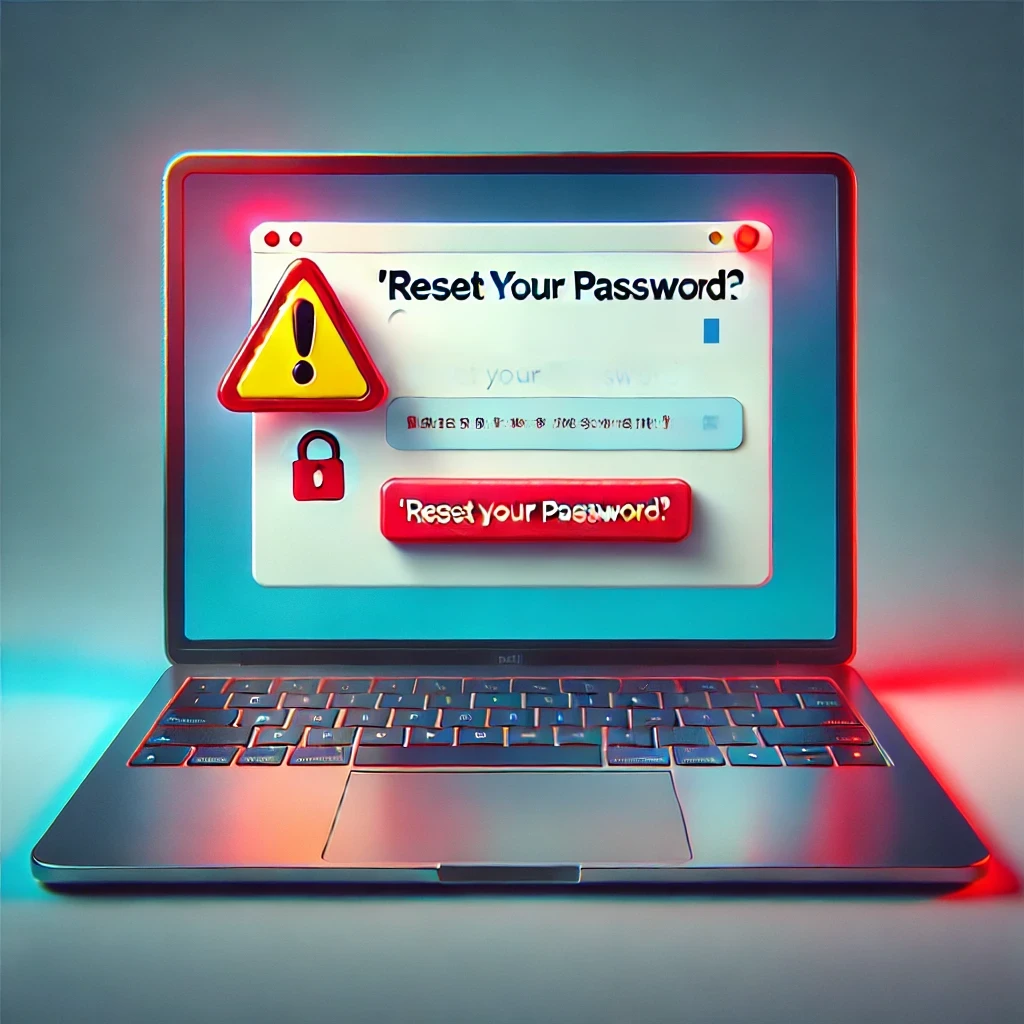
That “Reset Your Password” Email? Could Be a Trap for Your Login Credentials
Ever opened an email that looked like it was from your bank or favorite online store, urging you to reset your password? It might’ve seemed urgent, even a little alarming. But before you clicked that link, did a tiny alarm bell go off in your head? If so, you were right to be cautious. That email might have been a cleverly disguised attempt to steal your login information.
The Bait: A Sense of Urgency and Fear
These phishing emails are designed to trigger a sense of urgency and fear. They often warn of suspicious activity on your account, a security breach, or an expired password. The goal is to make you panic and click that enticing “Reset Password” button without thinking it through.
But here’s the catch: The link in the email doesn’t lead to the legitimate website. Instead, it takes you to a fake page that looks nearly identical to the real one. Once you enter your current (or new) password, it goes straight into the hands of the scammers.
How to Spot a Phishing Email
Phishing emails are getting more sophisticated, but there are still telltale signs you can look out for:
- Generic Greetings: Look for impersonal greetings like “Dear Customer” or “Valued Member” instead of your actual name.
- Suspicious Links: Hover your mouse over the link (without clicking) to see the actual URL. If it doesn’t match the official website address, it’s a red flag.
- Grammar and Spelling Errors: Phishing emails often contain typos or awkward phrasing. Legitimate companies usually have strict quality control on their communications.
- Urgent or Threatening Tone: The email may pressure you to act quickly or threaten consequences if you don’t comply.
What to Do if You Receive a Phishing Email
- Don’t Click on Anything: Resist the urge to click on any links or open attachments. Even hovering over links can be risky.
- Verify the Source: Contact the company directly through their official website or customer service number to confirm if they actually sent the email.
- Report the Email: Most email providers have a “report phishing” option. This helps them track and block similar scams.
- Change Your Password (If Necessary): If you’re genuinely concerned about your account’s security, change your password directly on the official website – not through the link in the email.
The Stakes Are High
Phishing scams aren’t just a minor inconvenience. They can lead to serious consequences:
- Identity Theft: Scammers can use your stolen login credentials to access your other online accounts, steal your personal information, and even commit financial fraud.
- Financial Loss: If they gain access to your bank or credit card accounts, they can drain your funds.
- Damage to Reputation: If scammers use your account to send spam or engage in illegal activities, it can be difficult to clear your name.
Protecting Yourself
The best defense against phishing scams is awareness and caution:
- Be Skeptical: Don’t trust any email that asks for your personal information or login credentials.
- Use Strong Passwords: Create unique, complex passwords for each online account. Consider using a password manager to keep track of them.
- Enable Two-Factor Authentication (2FA): This adds an extra layer of security by requiring a code from your phone or another device to log in, even if someone has your password.
- Stay Informed: Keep up to date on the latest phishing scams and security threats.
Remember: Your online security is your responsibility. By being vigilant and taking proactive steps to protect yourself, you can avoid falling victim to these malicious schemes.
A Final Thought
While it’s important to be cautious, don’t let fear dictate your online experience. The internet is still a valuable resource for information, communication, and entertainment. Just be smart about how you use it. After all, knowledge is the best weapon against those who seek to exploit your trust.
Disclaimer: The information in this blog post is intended for general knowledge and awareness. It is not a substitute for professional cybersecurity advice. Always consult with a trusted expert for specific security concerns.Please report any inaccuracies so we can correct them promptly.